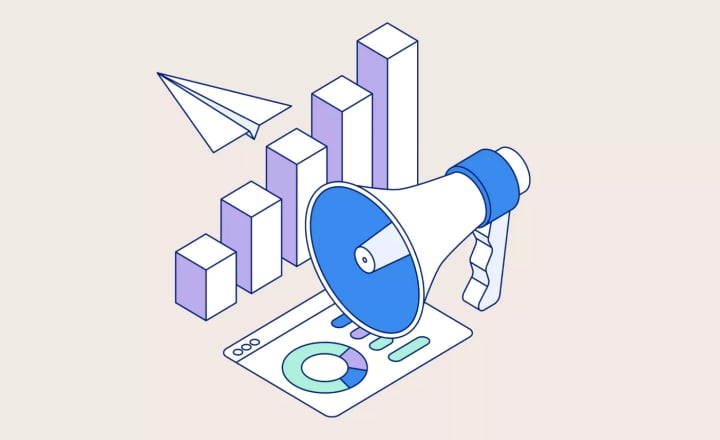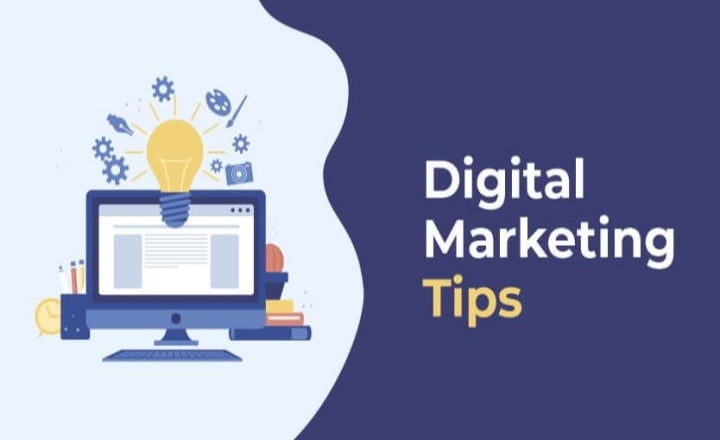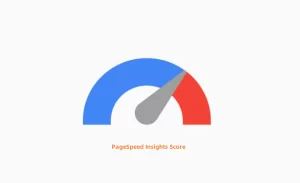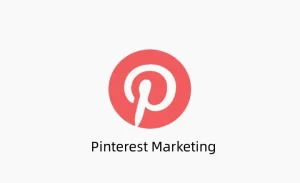In today’s competitive online landscape, having an effective digital marketing strategy is crucial for driving business growth and reinforcing customer engagement.
A well-executed strategy can help you reach your target audience, convert them into paying customers, and ultimately achieve your marketing goals.

In this comprehensive guide, we will explore the key elements of a successful digital marketing strategy and provide practical tips on how to build one that delivers measurable results. So, let’s dive in and unlock the power of digital marketing!
Table of Contents
- What is a digital marketing strategy?
- Top 10 Digital Marketing Strategies
- How to Build an Effective Digital Marketing Strategy
- Conclusion
What is a digital marketing strategy?
Digital marketing strategy is the key to success in the modern age of technology and online communication. It is a carefully crafted plan that helps businesses reach their target audience, engage with them, and ultimately drive conversions.
With a digital marketing strategy in place, businesses can effectively use various digital channels such as social media, search engines, email marketing, and content marketing to promote their products and services.
The beauty of a digital marketing strategy lies in its ability to measure and analyze the results, allowing businesses to refine their approach and optimize their campaigns for maximum impact.
In today’s fast-paced digital world, having a solid digital marketing strategy is essential for any business looking to thrive and stay ahead of the competition.
Top 10 Digital Marketing Strategies
Let’s explore the 10 most effective digital marketing strategies used in the industry today:
1. Search Engine Optimization (SEO)
Search engine optimization is the process of optimizing your website and content to achieve higher rankings in search engine results pages (SERPs).
By creating high-quality content, optimizing it around relevant keywords, incorporating meta information, and ensuring your website is search engine-friendly, you can increase organic traffic and attract the right visitors to your site.
Benefits of Search Engine Optimization:
- It leads to higher conversion rates by optimizing your website for user-friendliness and ease of use.
- It increases brand awareness and trust by ranking your content highly in search results.
- By targeting users actively looking for your products or services, you can save money in the long run.
2. Inbound Marketing
Inbound marketing is a holistic approach to attracting, qualifying, nurturing, and delighting customers and prospects. It encompasses various strategies, tools, and tactics, including content marketing, email marketing, lead nurturing, SEO, marketing automation, website optimization, and website analytics.
The goal of inbound marketing is to convert website visitors into paying customers by providing valuable content and building trusted relationships.
Benefits of Inbound Marketing:
- It is cost-effective, allowing you to target specific groups of people and achieve a higher return on investment (ROI).
- By creating trust and credibility among prospects and customers, it positions your business as an industry expert.
- It focuses on building long-term relationships that result in repeat customers, driving business growth.
3. Pay-Per-Click Advertising (PPC)
Pay-per-click advertising is a strategy in which advertisers pay each time a user clicks on one of their online ads. Using platforms like Google Ads and Bing Ads, you can reach people searching for terms related to your business.
PPC campaigns direct users to dedicated landing pages designed to encourage specific actions, such as making a purchase or completing a form.
Benefits of Pay-Per-Click Advertising:
- Tracking campaign performance is easy with real-time insights into views, clicks, and conversions.
- It provides controlled spend, allowing you to change or pause underperforming campaigns and avoid committing to a specific advertising budget.
- With instant results, you can set up and launch campaigns quickly.
4. Account Based Marketing (ABM)
Account-based marketing is a B2B marketing strategy that targets specific accounts selected by your sales and marketing teams. It involves creating personalized messaging for these accounts, focusing on their specific needs and pain points.
ABM aims to expedite the sales cycle by nurturing key decision-makers and stakeholders simultaneously with tailored content.
Benefits of Account-Based Marketing:
- It enables personalization, allowing you to create targeted campaigns tailored to the specific needs of your key accounts.
- Collaboration between sales and marketing teams fosters teamwork and alignment.
- It shortens sales cycles by nurturing primary decision-makers and relevant prospects simultaneously with personalized content.
5. Social Media Marketing
Social media marketing involves using social media platforms like Facebook, Twitter, LinkedIn, and Instagram to promote your content, products, or services, build brand awareness, engage with customers, and drive traffic to your website.
This strategy requires an ongoing advertising spend and the creation of landing pages specifically designed for users from those ads.
Benefits of Social Media Marketing:
- It provides cost-effective marketing, allowing you to expose your audience to your brand even when they’re not actively searching for it.
- By facilitating audience interaction, you can communicate directly with your target audience and engage them in your campaign.
- It improves brand loyalty, as positive experiences with your brand on social media are likely to lead to recommendations to friends and family.
6. Email Marketing
Email marketing involves sending promotional and informational emails to build relationships with your audience, convert prospects into buyers, and turn one-time buyers into loyal fans.
This strategy can include exclusive deals, website content promotion, upcoming sales notifications, and general messages on behalf of your business.
Benefits of Email Marketing:
- It drives traffic to your website by including links to relevant pages in your emails.
- Compared to direct mail or search engine marketing, it is more cost-effective.
- It delivers targeted messages to an audience that has opted-in to receive information.
7. Content Marketing
Content marketing involves creating and distributing valuable, informative, and engaging content to attract and retain a target audience.
This content can take various forms, including blog posts, videos, podcasts, infographics, white papers, eBooks, case studies, and more.
The goal of content marketing is to answer people’s questions, provide solutions to their problems, and build strong relationships with prospects and customers.
Benefits of Content Marketing:
- It helps build strong relationships with customers, increasing the likelihood of conversions and repeat purchases.
- Increase your website’s search engine optimization (SEO), driving more organic traffic and boosting your brand’s online presence.
- It positions your business as an authoritative source in your industry, enhancing your brand’s reputation and credibility.
8. Event Marketing
Event marketing involves creating buzz around a product, service, or brand through events like product launches, trade shows, or online events. By building anticipation, showcasing your product, and stimulating conversation, you can generate excitement and engagement among your target audience.
Benefits of Event Marketing:
- It builds anticipation by using social posts and teasers to create buzz about upcoming product launches or events.
- As you showcase your product or service, you can highlight its features and benefits to captivate your audience.
- It stimulates conversation and engagement, encouraging people to share, discuss, and participate in the event.
9. Video Marketing
Video marketing involves using videos to promote your products, services, and brand. It can include product demos, interviews with thought leaders, customer testimonials, or how-to videos.
You can increase engagement, boost conversion rates, and improve brand association by including videos on your website, PPC landing pages, or social media outlets.
Benefits of Video Marketing:
- It improves SEO by increasing the likelihood of appearing on the first page of search results.
- Providing engaging visual content increases conversion rates.
- As videos are frequently shared with others, it enhances brand association and increases brand awareness.
10. Earned Media
Earned media refers to the coverage of your business, products, or events written by third parties without payment. It includes tactical PR, press releases, infographics, and creative assets.
Earned media is cost-effective, and scalable, and helps improve your website’s search engine authority through backlinks from trusted publishers.
Benefits of Earned Media:
- It is cost-effective, as coverage secured from websites is essentially free.
- With its scalability, you can tailor campaigns based on your budget and goals.
- Your website’s authority is enhanced by generating backlinks from reputable publishers.
How to Build an Effective Digital Marketing Strategy

With the majority of content consumption happening in the digital world, it’s important to have a well-defined digital marketing strategy in place. Here, we will guide you through the process of building an effective digital marketing strategy, covering seven key steps:
Step 1: Set Clear Goals
Before diving into the details of your digital marketing strategy, it’s important to establish clear and specific goals. These goals should align with your overall business objectives and guide your decision-making process.
To set effective goals, you can use the SMART criteria:
- Specific: Clearly define what you want to achieve.
- Measurable: Ensure that your goals can be tracked and measured.
- Attainable: Set realistic goals that are within reach.
- Relevant: Ensure that your goals align with your overall business objectives.
- Timely: Set a specific timeframe for achieving your goals.
Step 2: Evaluate Your Current Digital Marketing Presence
Take stock of your existing marketing channels, such as your website, social media platforms, email marketing, content marketing/SEO, and pay-per-click advertising. Rank these channels based on their effectiveness in driving leads and traffic.
By understanding which channels are performing well and which are not, you can better allocate resources and focus on areas that will yield the best results.
Step 3: Understand the Digital Sales Funnel
Digital sales funnels show the journey a potential customer takes from being unaware of your brand to becoming a loyal customer.
It consists of the following stages:
- Awareness: Make potential clients aware of your brand through channels like social media and search engine optimization.
- Interest: Generate interest by showcasing what sets your brand apart from the competition through digital publications and videos.
- Engage: Solidify relationships by addressing customer concerns and encouraging interaction through sponsored social media posts and email campaigns.
- Action: Encourage customers to take action, such as making a purchase, by implementing clear calls-to-action and incentives.
Understanding each stage of the funnel will help you tailor your digital marketing efforts to meet the needs of your potential customers at every step.
Step 4: Build Buyer Personas
To effectively reach your target audience, you need to have a clear understanding of who they are. Building buyer personas will help you create targeted and personalized marketing campaigns that resonate with your audience.
A buyer persona is a fictional representation of your ideal customer. Personas should be developed based on factors such as demographics, interests, motivations, and pain points. Conducting market research, analyzing customer data, and leveraging analytics tools can provide valuable insights to inform your buyer persona creation process.
Step 5: Identify Your Customers at Each Stage of the Funnel
It is essential to identify where your customers are in the digital sales funnel, as different customers may be at different stages.
By knowing where your customers are in the funnel, you can target them with the right content and messaging to move them closer to making a purchase.
Step 6: Create a Comprehensive Content Plan
Your content plan should align with your overall goals and incorporate various types of content, such as blog posts, social media updates, videos, and email campaigns.
Start by conducting keyword research to identify important keywords that will improve your search engine optimization (SEO). Create a content calendar that outlines specific topics, publication dates, and keywords for each piece of content. This will provide you with a long-term roadmap and ensure consistency in your messaging.
Utilize social media platforms to share your content and engage with your audience. Incorporate clear calls-to-action and widgets to make it easy for customers to connect with your brand. Consider using marketing automation tools to streamline your content distribution process and save time.
Step 7: Analyze and Measure Results
Use analytics tools to track key metrics and gather data on customer engagement, conversion rates, and overall progress toward your goals.
Reviewing these analytics will help you identify what’s working well and what needs improvement. Adjust your strategy as needed, and be open to trying new digital marketing tools and techniques that align with your analysis findings.
Visualize your data using data visualization tools to gain a better understanding of trends and make more informed decisions. This will also allow you to present your findings effectively to stakeholders and team members.
Remember, building an effective digital marketing strategy is an ongoing process. Continuously monitor and refine your strategy to stay ahead of the ever-evolving digital landscape.
Conclusion
Creating an effective digital marketing strategy is essential for driving business growth and engaging customers in the online landscape.
By understanding the different types of digital marketing strategies and following a systematic approach to building your strategy, you can achieve measurable results and stay ahead of your competitors.
Remember to set clear goals, understand your audience, optimize your digital assets, allocate resources wisely, and continuously measure and analyze your efforts. With a well-crafted digital marketing strategy, you can unlock the full potential of your online presence and drive your business to new heights.


